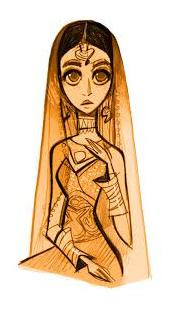I attended a wedding of a college friend last weekend. The groom is Marathi and the bride is Gujarati, and the wedding was a mix of cultures of both states, not just the matrimony in Marathi community. It was an unforgettable experience for me as I tasted such delicious delicacies from both states. Such varied and lip-smacking menu is rarely found in one wedding. There was both non-vegetarian and vegetarian food, at separate counters. This served the interests of both, without hurting anyone’s religious emotions.
Gujarati wedding does not involve items like meat, fish, or eggs, still prepare tasty dishes without these ingredients. However, Marathi community extensively uses of meat and seafood and the Maharashtrian Cuisine had unique taste and flavor. Two distinct types of cuisines were available at the wedding, which included both Konkani Cuisine (from coastal Maharashtra) and Varadi Cuisine (from Vidarbha region).
In the Konkani cuisine, there were lots of dishes made up of fish, with a great combination of grated and fresh coconuts. Maharastrians make generous use of peanuts and cashew nuts in their gravies to make the food tasty, and cook food in peanut oil. I loved the way Mackerel and Pomfret were cooked. I had so many options to choose from; both vegetarian and non-vegetarian. Most of my friends loved the Bombay duck, which is the most famous fish delicacy of Maharashtra.
Since the Gujarati community is a vegetarian one, there were arrangements according to the traditional Gujarati cuisines. Most of vegetarian dishes were dishes treated with Kala Masala (a mix of various spices), which imparted a special flavor to the food. Jaggery and tamarind were extensively used in the Gujarati food to impart flavor to the vegetarian curries to have a sweet and sour taste.
In deserts, there were yummy sweet delicacies, such as Motichur Laddoos and Puran Poli, the most famous dessert of Maharashtra, which hold its own importance in the Marathi community. With such delicious delicacies, we attended a very interesting wedding, which our tongues will never forget.









